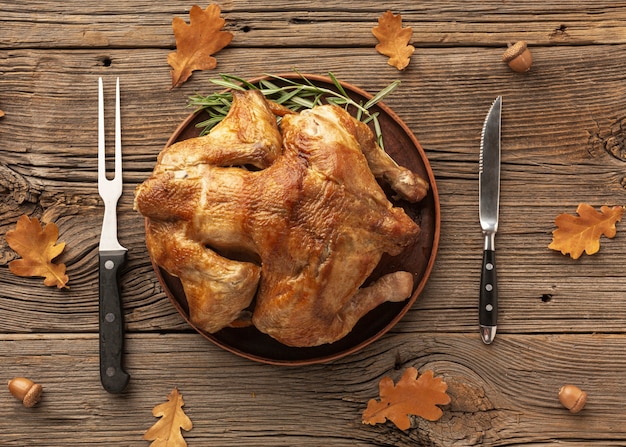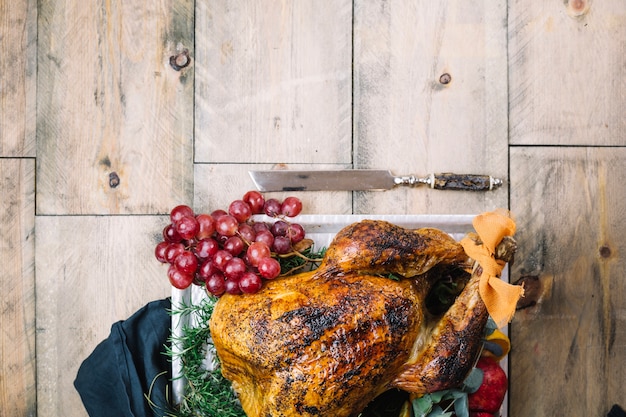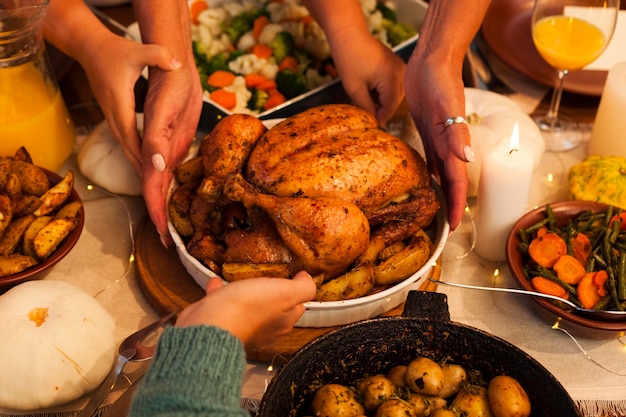Ah, round roasts. They're the culinary heroes of Sunday lunches, the centerpiece of holiday feasts, and a real testament to the power of simple, home-cooked goodness. Now, I'm no culinary wizard, just your average cook who's been at it for a while and has learned a few tricks along the way. And trust me, there's nothing quite as satisfying as carving into a perfectly roasted piece of meat, bursting with flavor and meltingly tender. So, grab a comfy spot, because we're diving deep into the world of round roasts, from choosing the perfect cut to creating drool-worthy sauces. Get ready to level up your cooking game!
(Part 1) Choosing Your Roast: The Meat of the Matter

First things first, we need to pick our weapon. There’s a whole arsenal of cuts out there, each with its own personality, so let’s find the one that’s perfect for your needs.
The Classics:
For those who like to stick to the tried-and-true, there are a few cuts that are always a safe bet. They're reliable performers, known for their forgiving nature and rich flavor.
- Beef rib roast: This is the granddaddy of roasts, a true showstopper that’s guaranteed to impress. It's best to go for a bone-in cut, as the bone acts like a little flavor conductor, keeping the meat moist and adding an extra layer of savory goodness. Imagine a beautiful, golden-brown crust, giving way to juicy, tender meat. That's what you're aiming for with a beef rib roast.
- Leg of lamb: A versatile choice that’s perfect for roasting whole, allowing you to serve a beautiful centerpiece, or separating it into individual chops for a more casual meal. Lamb has a distinct, slightly gamey flavor that some adore, and it's often paired with herbs like rosemary and mint for a truly classic taste.
- pork loin: If you're looking for a leaner option with a milder flavor, pork loin is a great choice. It's perfect for families with picky eaters, as it's generally quite forgiving. Think of it as the "crowd-pleaser" of the roast world.
Beyond the Classics:
Now, for those who crave a bit more adventure, there are some fantastic alternatives that offer unique flavor profiles and textures. Let's venture a little further into the world of roasts.
- Shoulder of lamb: This is a cut that I've fallen head over heels for. It's packed with flavor and yields a generous amount of meat, making it perfect for a larger gathering. The shoulder is also great for slow cooking, resulting in a beautifully tender and flavorful roast. Think melt-in-your-mouth deliciousness, perfect with a side of roasted root vegetables.
- Beef chuck roast: This is a fantastic choice for those who love a bit of hearty flavor. It’s a tough cut, but slow cooking is its secret weapon, turning it into a truly tender masterpiece. Think of it as the underdog of the roast world - it might look unassuming, but it packs a punch of flavor.
Choosing the Right Size:
The size of your roast is a crucial factor, depending on how many hungry mouths you need to feed. For a cozy dinner with a few friends, a 2-3 pound roast is a perfect fit. But if you're hosting a big gathering, go for something more substantial, like a 5-6 pounder or even larger.
And remember, don't be afraid to ask your butcher for advice. They're the real meat experts! They'll know just the right cut for your needs, the best cooking techniques, and can even give you some insider tips on how to maximize flavor.
(Part 2) Seasoning: The Secret to Flavor

Alright, we've chosen our perfect cut of meat, and it’s ready to be transformed into something truly delicious. Now, it’s time to give it some love with a good seasoning. Think of this as adding the finishing touches to a work of art – the right seasonings can make all the difference.
The Essentials:
Salt and pepper are the backbone of any good seasoning, and they shouldn’t be overlooked. They’re the foundation of flavor, bringing out the natural taste of the meat and adding a touch of brightness. I always use kosher salt, as its larger grain size means it distributes evenly and doesn’t make the meat overly salty. And freshly ground black pepper adds that extra bit of spice and depth.
Adding Some Zing:
But why stop there? Let’s get creative with some herbs and spices that will truly elevate our roast. The key here is to match the seasonings to the meat, creating flavor pairings that are both harmonious and exciting.
- Beef: Rosemary, thyme, garlic, and onion powder are classic choices for beef. They bring a savory, earthy aroma that complements the rich flavor of beef perfectly.
- Lamb: Mint, rosemary, garlic, and lemon zest are excellent choices for lamb. The fresh, citrusy notes of lemon pair beautifully with the slightly gamey flavor of lamb, creating a truly balanced and delicious combination.
- Pork: Sage, rosemary, thyme, garlic, and paprika are perfect for pork, adding a warmth and depth of flavor that’s reminiscent of traditional roast pork. These herbs and spices create a harmonious symphony of flavors that's sure to impress your guests.
Making a Rub:
Now, for an extra layer of flavor and a gorgeous, crispy crust, let's create a simple rub. It's a quick and easy way to infuse the meat with deep, delicious flavors. Just combine your chosen herbs and spices with a little olive oil or melted butter, creating a paste. Then, rub it all over the roast, coating it evenly. As the roast cooks, the rub will create a beautiful, crusty exterior, adding a delicious crunch to each bite.
Don’t Forget the Fat:
Fat is our friend when it comes to a roast. It's the secret ingredient that keeps the meat moist, juicy, and tender. Fat also adds a richness of flavor that makes every bite even more satisfying. If your chosen cut doesn’t have a lot of visible fat, don’t fret! You can add a few slices of bacon or pancetta on top. The fat from the bacon will render during cooking, basting the roast and creating an incredibly flavorful, crispy crust.
(Part 3) Getting Ready to Roast: A Little Prep Goes a Long Way

We're almost ready to unleash the magic of the oven, but there are a few essential prep steps that will make all the difference. These steps might seem simple, but they’re crucial for ensuring a perfectly cooked roast.
Bringing the Meat to Room Temperature:
This is one of those little details that often gets overlooked, but trust me, it's vital. Cooking a cold roast can lead to uneven cooking, with the outside cooking much faster than the inside. This can result in a dry and overcooked roast, a tragedy we want to avoid! So, allow the meat to sit at room temperature for about an hour before roasting. This will give it a chance to warm up and cook more evenly, ensuring a juicy and flavorful result.
Searing for a Golden Crust:
Searing is a beautiful thing. It’s not just about creating that beautiful golden-brown crust, it’s about locking in those delicious juices and adding a layer of intense flavor. Heat a cast iron skillet or a heavy-bottomed pot over high heat. Then, carefully sear the roast on all sides until it's nicely browned. This process, known as the Maillard reaction, creates a complex network of flavors that will enhance the taste of your roast.
Using a meat thermometer:
This is a must-have tool for any serious home cook, especially when roasting meat. It’s the ultimate way to ensure your roast is cooked perfectly to your liking. The exact temperature you’re aiming for will depend on the type of meat and your desired level of doneness, but we’ll get into that in more detail later. Simply insert the thermometer into the thickest part of the roast, ensuring it’s not touching any bone. This will give you a precise reading, allowing you to cook your roast to perfection.
Now, we’re ready to unleash the magic of the oven. Let's move on to the next part!
(Part 4) Mastering the Oven: Getting That perfect roast
Alright, the oven is preheated, the meat is seasoned and prepped, and we're ready to embark on the roasting journey. This is where the real magic happens – the transformation from raw meat to a culinary masterpiece.
Choosing the Right Temperature:
The temperature at which you cook your roast has a significant impact on the cooking time and the final texture. Generally, you’ll want to roast at a moderate temperature, around 325-350 degrees F (160-175 degrees C). This allows the meat to cook slowly and evenly, resulting in a tender and flavorful roast. If you cook at a higher temperature, the outside might get cooked too quickly, leaving the inside raw. A moderate temperature ensures a delicious, evenly cooked roast.
Using a Roasting Rack:
This is a simple but essential tool that makes a world of difference. It allows hot air to circulate freely around the roast, ensuring even cooking and preventing the bottom from burning. If you don’t have a roasting rack, you can improvise with a trivet or even a few onions or carrots placed underneath the roast. This will elevate the roast, allowing heat to circulate more evenly.
Basting for Juiciness:
Basting is a crucial step in keeping the roast moist and adding flavor. It's like giving the roast a little TLC, ensuring it stays hydrated and juicy as it cooks. You can use pan drippings, melted butter, or even a flavorful broth to baste your roast. Every 30 minutes or so, spoon some of the liquid over the meat, turning it to ensure all sides get a good dousing. This keeps the meat moist and adds a rich, flavorful glaze.
Resting for Tenderness:
Once the roast is cooked to perfection, it needs some time to relax and settle. This resting period is absolutely essential for achieving the ultimate tenderness and flavor. After the roast comes out of the oven, let it rest for at least 15 minutes before carving. This allows the juices to redistribute throughout the meat, making it even more tender and flavorful. The juices will also stay inside the meat rather than running out onto the cutting board, preventing a dry roast.
(Part 5) Cooking Times: A Guide to Getting it Right
Knowing the correct cooking time is essential for ensuring your roast is cooked perfectly. It’s impossible to give you an exact time, as it depends on the size and weight of your roast. But I can give you some helpful guidelines to get you started.
Estimating Cooking Time:
As a general rule, allow about 15-20 minutes of cooking time per pound for a roast cooked at 325 degrees F (160 degrees C). This is a good starting point, but remember that this is just a guideline. The actual cooking time can vary depending on the type of meat, the thickness of the roast, and your preferred level of doneness. So, it's important to check the internal temperature to ensure it's cooked to perfection.
Internal Temperature:
The most accurate way to determine if your roast is cooked to your liking is by using a meat thermometer. Here are the recommended internal temperatures for different types of meat, based on the USDA guidelines.
| Meat Type | Rare | Medium Rare | Medium | Well Done |
|---|---|---|---|---|
| Beef | 125-130 degrees F | 130-135 degrees F | 140-145 degrees F | 160 degrees F |
| Lamb | 130-135 degrees F | 135-140 degrees F | 145-150 degrees F | 160 degrees F |
| Pork | N/A | N/A | 145 degrees F | 160 degrees F |
| Chicken | N/A | N/A | 165 degrees F | 165 degrees F |
These temperatures are just a guide, and you can adjust them based on your personal preference for doneness. For example, if you prefer your beef rare, aim for an internal temperature of 125-130 degrees F. But if you like your beef well-done, cook it until it reaches 160 degrees F.
(Part 6) Creating a Sauce: The Finishing Touch
What’s a roast without a delicious sauce? It’s the finishing touch, the exclamation point at the end of a culinary sentence. A good sauce can transform a simple roast into a truly spectacular dish, adding a layer of flavor and richness that elevates the entire meal. There are countless ways to make a sauce for your roast, but here are a few of my favorite go-to methods.
Making Pan Sauce:
This is the simplest and most classic way to make a sauce for your roast, and it uses all those delicious pan drippings. After the roast is cooked, remove it from the pan and set it aside to rest. Pour off any excess fat from the pan, leaving behind those flavorful brown bits. Then, deglaze the pan with a little bit of wine or broth, scraping up those delicious bits that have stuck to the bottom. Add a tablespoon or two of butter and whisk until smooth, creating a rich and velvety sauce. Season to taste with salt and pepper, and you’ve got a sauce that’s bursting with flavor.
Adding Flavor:
But why stop there? Let’s amp up the flavor even more. You can add a few extra ingredients to your pan sauce to take it to the next level. I love to add chopped shallots, garlic, fresh herbs, or a squeeze of lemon juice. These ingredients add depth and complexity, creating a sauce that’s truly unforgettable.
Thicken the Sauce:
If you prefer a thicker sauce, you can add a tablespoon or two of cornstarch or flour to the pan drippings, whisking it until smooth. Then, slowly whisk in the wine or broth until the sauce thickens. Just be sure to whisk constantly to prevent lumps from forming. This technique creates a sauce that's thick and velvety, perfect for coating those tender slices of roast.
Alternative Sauce Options:
If you're not feeling the pan sauce, don’t worry, there are plenty of other delicious sauce options. You could try a simple gravy made from flour, broth, and pan drippings. This is a classic choice that’s always a winner. Or you could make a more elaborate sauce, like a red wine reduction or a creamy mushroom sauce. These options add a touch of elegance and complexity, making your roast feel even more special.
(Part 7) Accompanying Dishes: Rounding Out Your Meal
No roast is complete without a selection of delicious accompaniments. These side dishes complement the richness of the roast, offering a variety of textures and flavors that make the entire meal truly satisfying.
Starchy Sides:
- roast potatoes: A classic for a reason, roast potatoes are a perfect complement to a roast. They're crispy on the outside and fluffy on the inside, soaking up all those delicious pan drippings. They’re the ultimate comfort food, and they always go down a treat.
- mashed potatoes: A creamy and comforting side dish, mashed potatoes are perfect for those chilly evenings. Try adding some garlic or herbs for an extra flavour boost, transforming a simple side dish into something truly special.
- sweet potato mash: A sweeter twist on mashed potatoes, sweet potato mash adds a touch of sweetness and richness to your meal. It’s a great choice for those who want a bit of a different flavor profile.
- Roasted Vegetables: Bring on the vibrant colours and flavours! Roasting vegetables brings out their natural sweetness and adds a delightful crunch. Try carrots, Brussels sprouts, broccoli, asparagus, or even butternut squash. They’ll be tender and slightly caramelized, adding a welcome burst of flavor.
Green Sides:
- green beans: Simple yet satisfying, green beans add a touch of freshness and a burst of green color to your plate. Try them steamed, roasted, or sautéed with garlic and olive oil for a simple and delicious side dish.
- Asparagus: A springtime classic, asparagus is best roasted or grilled. It adds a bit of freshness and brightness to your meal, complementing the richness of the roast perfectly.
Other Options:
- Salad: A light and refreshing contrast to the richness of the roast, a salad adds a touch of lightness and freshness. Try a simple green salad with a vinaigrette dressing, or something more elaborate with grilled chicken or steak.
- Bread: A perfect way to soak up the pan sauce, bread is a classic accompaniment to roast. Choose a crusty bread or rolls that can stand up to the richness of the roast.
(Part 8) FAQs: Your Roast-Related Questions Answered
Now, let’s address some of the most common questions you might have about round roasts.
1. How do I know if my roast is cooked through?
The most accurate way to determine if your roast is cooked through is to use a meat thermometer. Insert it into the thickest part of the roast, making sure it’s not touching any bone. The roast is cooked through when it reaches the recommended internal temperature for your desired level of doneness.
2. What if my roast is overcooked?
It happens to the best of us! If your roast is overcooked, it might be a bit dry. To help remedy this, you can slice the roast thin and add some pan sauce to help make it more moist. You can also serve it with a side dish that’s a bit more substantial, like mashed potatoes or roasted vegetables.
3. Can I freeze my roast?
Yes, you can! Wrap the roast tightly in plastic wrap and then place it in a freezer-safe bag. It should keep well for 3-4 months. When you’re ready to cook it, defrost the roast in the refrigerator for a couple of days before cooking.
4. Can I use a slow cooker to roast my meat?
Absolutely! A slow cooker is a great way to cook a roast, especially if you want a super tender and flavorful result. Just make sure you use a cut of meat that's suitable for slow cooking, like a chuck roast or a shoulder of lamb.
5. How do I make gravy from pan drippings?
Making gravy from pan drippings is simple and delicious. After the roast is cooked, remove it from the pan and set it aside to rest. Pour off any excess fat from the pan, leaving behind those flavorful brown bits. Then, deglaze the pan with a little bit of wine or broth, scraping up those delicious bits that have stuck to the bottom. Add a tablespoon or two of butter and whisk until smooth. Add a tablespoon or two of flour and whisk until the sauce is thickened. Season to taste with salt and pepper, and you've got a rich and flavorful gravy that perfectly complements your roast.
There you have it, folks! Your complete guide to mastering round roasts. Now, grab your apron, gather your ingredients, and get ready to create a culinary masterpiece! And remember, the most important ingredient is a bit of passion and a whole lot of love. Happy cooking!
Everyone is watching

How to Cook Frozen Lobster Tails Perfectly: A Step-by-Step Guide
RecipesLobster. Just the word conjures up images of lavish meals, special occasions, and a taste of luxury. But let's...

Pigs in a Blanket Cooking Time: How Long to Bake for Perfect Results
RecipesAh, pigs in a blanket. Just the name conjures up images of those delightful little parcels of crispy pastry en...

Pork Fillet Cooking Time: How Long to Cook It Perfectly
RecipesPork fillet, or tenderloin as it's sometimes called, is a real favourite in our house. It's so versatile, and...

The Ultimate Guide to Cooking Delicious Frankfurters
RecipesLet's face it, we all love a good frankfurter. It's a classic, simple, and always satisfying. But let's be rea...

Wolf Meat Recipes: A Guide to Cooking Wild Game
RecipesLet's be honest, you don't see wolf meat at your local butcher shop every day. It's a bit of a wild card, but ...
